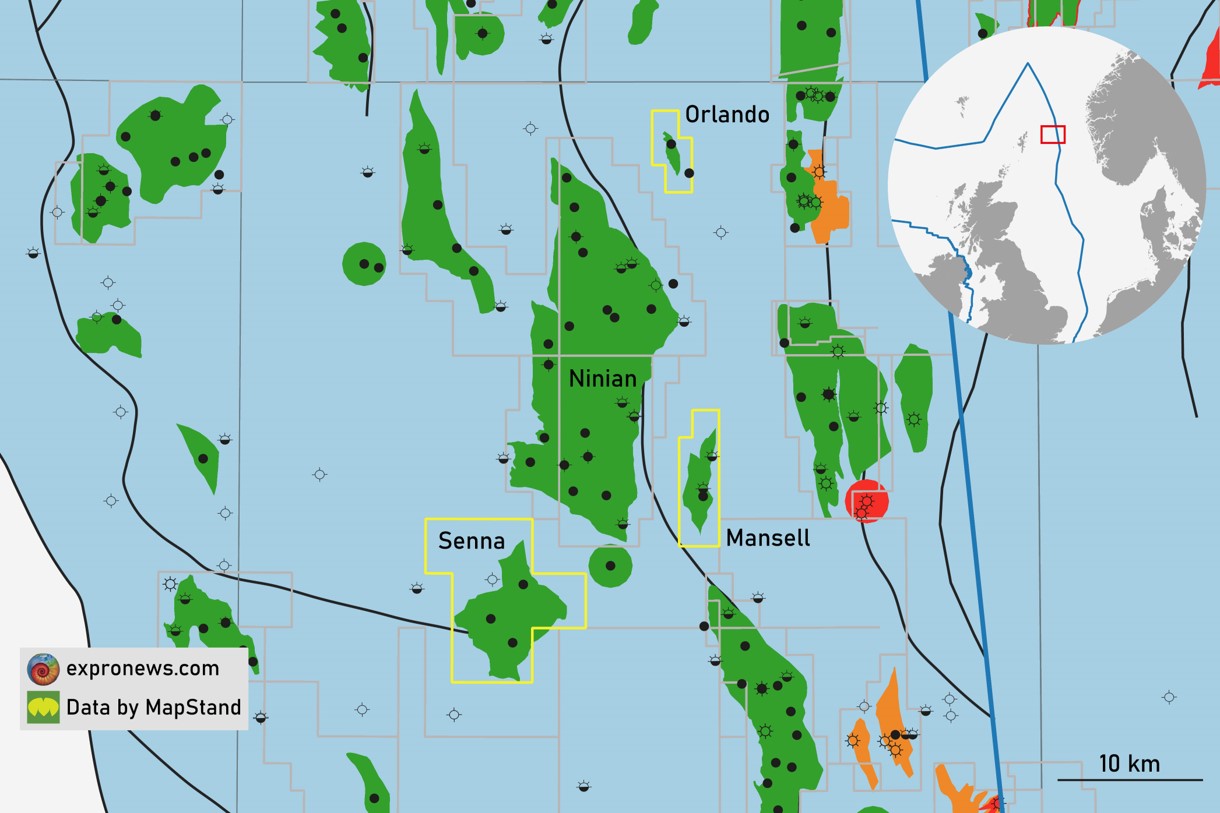Yesterday it was announced that Tailwind Energy is to take over Decipher Energy’s assets. Consisting of one producing field, this will generate immediate cash flow for the buyer.
Deciphers assets are all based in the Northern North Sea, around the Ninian field operated by CNR UK.
Orlando – not the success it was anticipated to be
The producing field is Orlando, located to the northeast of Ninian. It was discovered by Chevron through drilling well 3/3-11 in 1988-89. The well encountered a 160 ft oil column within a tilted fault block structure in Middle Jurassic Tarbert Formation reservoir sandstones. Appraisal wells 3/3b-13 and 13Z were drilled by MPX in 2011/2012 in the southern part of the field.
According to Decipher, the base case reserves of the field amount to 8 MMboe, with current production taking place through one development well. The field has so far not lived up to its expectations though. There was a short spell at the start of production in 2019 where almost 5000 Boe/d was reached, but since then production dropped significantly to between 2,000 and 3,000 Boe/d, with intermittent shut downs. Decipher had hoped to produce at a plateau rate of 10,500 Boe/d.
Before Decipher, Iona tried to develop the Orlando field and planned to drill two subsea wells. However, the company did not survive the prolonged downturn that started in 2014, which ultimately led to Decipher taking over the Orlando development in 2017.
Senna – one of the larger undeveloped discoveries in the Northern North Sea?
Divided into two parts with different contacts, the Senna accumulation was once treated as two separate discoveries in Broom, Rannoch and Etive formation sandstones named Ronan and Oran. Taken together, Decipher reports Senna to have contingent resources of up to 60 MMbbls, which certainly is a good size for an undeveloped discovery so close to infrastructure. Peak production potential from a 3 production well development is estimated to be 24,000 bopd.
New broadband 3D seismic data was acquired in 2018 over Senna to aid in determining the development potential and progress to submission of a field development plan.
Mansel
Formerly known as Staffa, the Mansel field was discovered in 1985 by BP well 3/8b-10 and following appraisal was produced as a subsea tieback to the Ninian South Platform between 1992 and 1995. The field suffered heavily from wax issues. Total production so far amounts to 5.4 MMboe, with Decipher stating that there is 16 MMboe of contingent resources left.
Tailwind
The assets Tailwind Energy currently has a stake in are the Triton Area, which consists of six producing oil fields in the UK Central North Sea, the Columbus development and the Conwy oil field in the Irish Sea. The six fields of the Triton cluster are Bittern, Guillemot West & Guillemot Northwest, Gannet E, Clapham, Pict and Saxon.
With the acquisition of Decipher’s assets, Tailwind is now expanding its assets into the Brent province.
HENK KOMBRINK





